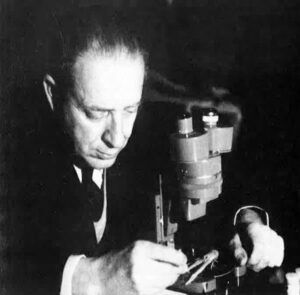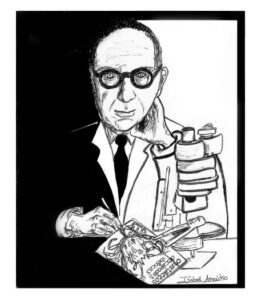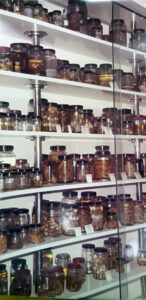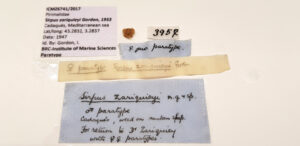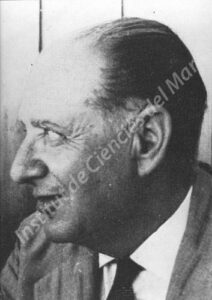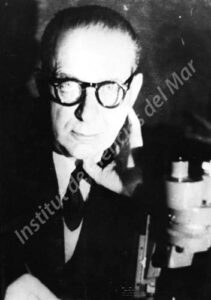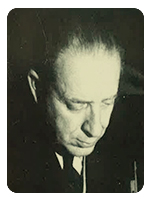
Born in Barcelona on January 3, 1897, educated at the Jesuit College, he graduated with distinction in medicine from the University of Barcelona and studied pediatrics in Paris. Regardless of his work as a pediatrician, he excelled in the field of entomology and carcinology.
In 1917, with the help of his father, Ricardo Zariquiey Cenarro, he began the collection and study of hypogean beetles, presenting more than 40 publications that include the description of 12 new taxa. Over time, he created one of the most important collections of hypogean beetles in all of Europe, currently kept in the Museum of Natural Sciences in Barcelona.
After the death of his father, he continued his legacy in the study and collection of decapod crustaceans, becoming one of the most influential scientists in his field. In the town of Cadaqués, he established the base of his studies, turning this Catalan region into one of the best studied in the field of carcinology. He contributed to the formation in 1950 of a carcinology group with the most renowned scientists of the time, composed of Dr. Isabella Gordon, Dr. Theodore Monod, Dr. Forest, Dr. Holthuis, and himself. He participated in the description of 10 species and his greatest work, “Iberian Decapod Crustaceans”, is today obligatory literature. With more than 35,000 specimens, the Zariquiey Collection of decapod crustaceans is, to this day, the best preserved sample of the European fauna of this group, highlighting the 679 type specimens, both of species described by Zariquiey, and of others that were donated by other institutions.
He was president of the Catalan Institution of Natural History, honorary researcher of the Instituto de Investigaciones Pesqueras, active collaborator of the Museum of Zoology of Barcelona, correspondent of the National Museum of Natural Sciences, life member of the Entomological Society of France, member of the Royal Spanish Society of Natural History and of the Entomological Society of Spain, co-founder and collaborator of the magazine Crustaceana of Leiden (Holland).
Many of the most renowned scientists of his time recognized the value and contribution of his studies:
…for his professional personality, deep humanism and scientific value, he deserves the highest esteem of all of us who were lucky enough to know him and share his hobbies….
Francesc Espanol i Coll
…Zariquiey’s idea, based on unsurpassed knowledge of living animals, that some of the museum taxonomist’s variable species were actually mixtures of two or more species, met with initial skepticism. But then the specialists had to recognize the correctness of this vision….
Isabella Gordon
…thanks to the tireless work of Doctor Zariquiey, the Cadaqués region is one of the best studied. For more than 30 years he conducted an intensive study with local fishermen….
Lipke Bijdeley Holthuis
The legacy of Ricardo Zariquiey Álvarez goes beyond his publications, he left behind two of the best preserved biological collections in Europe, as well as the human and scientific recognition of all those who worked with him.
Written by
This biographical note has been prepared from the obituaries written by Dr. Francesc Español in the Spanish Journal of Entomology, Dr. Isabella Gordon in Nature and Dr. Holthuis in Crustaceana, as well as information collected in the poster “Zariquiey: A tribute to two great scientists ad their legacies”, which was presented at The Crustacean Mid-Year Meeting, held in Barcelona in 2017.

